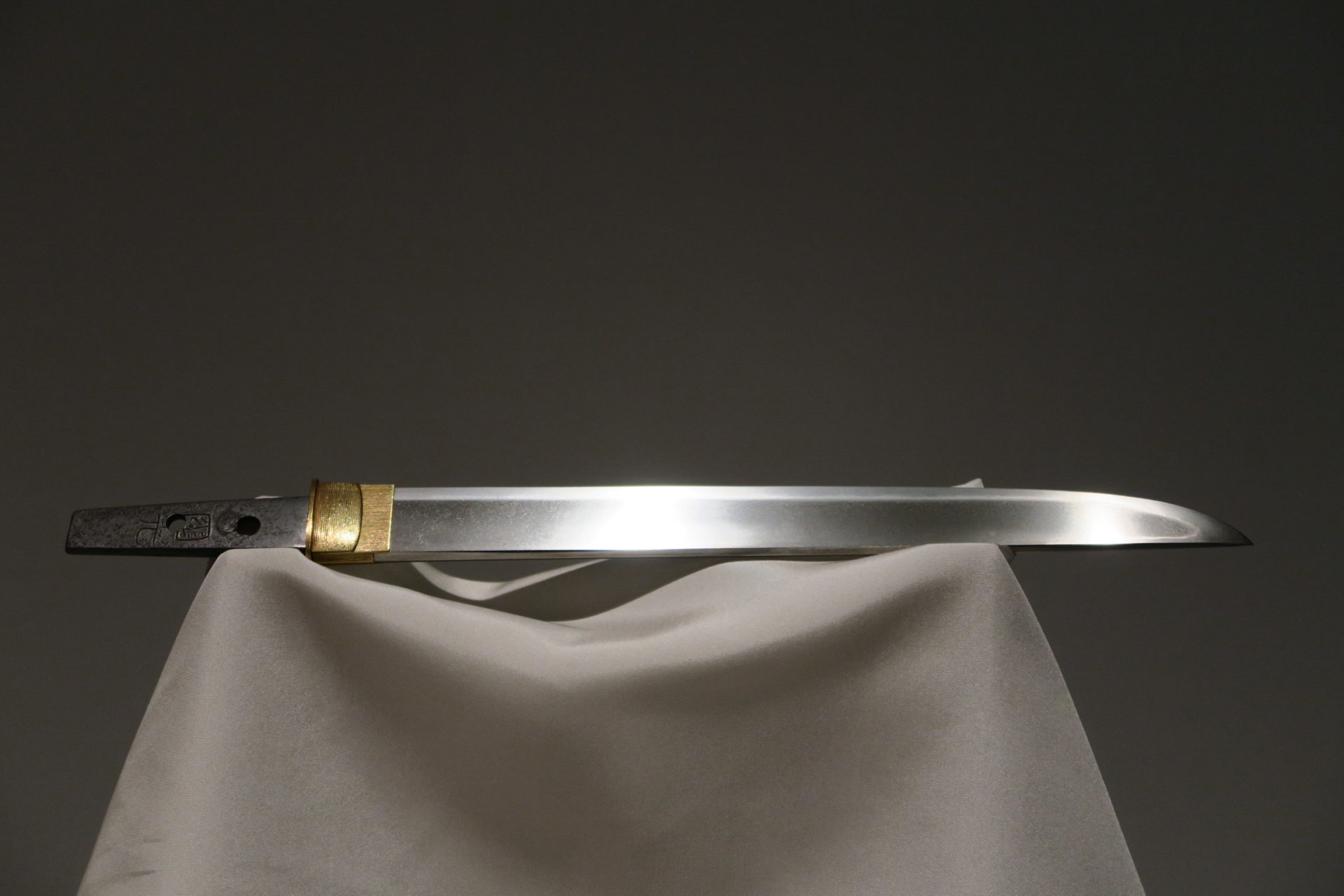A Japanese swords have long been treated with special reverence. More than simply tools of war, swords have had ceremonial uses as well. They have also been purely objects for appreciation in their own right, a role in which they led the way for other Japanese art and handicrafts. Already in the Kamamkura period (late 12th to early 14th century) the book ‘Meitsukushi’ (Collection of Signatures) was published, which recorded the characteristics of various swords smiths’ work. From this account we understand how Japanese people continued to preserve swords of older eras iregardless of these weapons’ actual usage.
Once called ”the soul of samurai’’, in the Edo period (early 17th to late 19th century), swords were the most important possessions for samurai. Therefore, upon departing for battles, samurai prayed for victory and offered armor or swords to shrines. When returning victorious, they would again offer up swords and armor, this time in appreciation. Just as a lords would reward warriors with land for great battle achievements, so would they also present samurai with swords for their valor. Such granting of swords was especially frequent during the Sengoku period (latter part of the 16th century) in order to establish a strong bond of trust between the lord and his vassals.
Prior to the Muromachi period (late 14th to early 16th century) no major importance was not placed on the selection of swordsmiths for swords presented as gifts. In the Mid-Muromachi period, however, the professionals in charge of overseeing the art collection and objects for use in the household of the Ashikaga shogunate began to procure swords from swordsmiths who produced work of a standard befitting a shogun’s rank. Secret books about appraising swords, listing the stylistic features of individual swordsmith began to be written, and professional connoisseurs appeared. One of the most significant families of appraisers families was the Hon’ami, who, alongside a traditional business of sword polishing, also conserved swords and handled appraisals for Daimyo (feudal lords). Certificates with proof of authenticity and price issued by the Hon’ami family were always attached to swords exchanged as gifts between the Shogun and Daimyo, or between Daimyo of different warrior clans.
For both Shogun and Daimyo, swords were passed down through families as proof of their ancestors’ battle achievements. From a practical point of view, they were valuable properties as weapons, and yet at the same time could be used as diplomatic gifts. In 1719, a catalog of master swords in existence across Japan, ‘Meibutsu-cho’, was compiled at the order of the 8th Shogun Yoshimune. This included a selection of swords used by Heian-period (8th to late 12th century) warlords as well as renowned swords dating back to the Nambokucho period (early 14th to late 14th century).
Today, 300 years later the Japanese sword is highly valued around the world as important cultural assets and appreciated as ’bijutsu token’ (sword as artistic object).
The finest swords are known in Japanese as ’meito’ (literally ‘swords with a name’, i.e. famous ), but the absence of signature on a blade does not necessarily preclude its being a meito. There are more important considerations. To qualify as a meito a blade must have a good shape, appropriate to its function as a katana or tachi; it must be well constructed; be strongly and finely forged; and have an accurate temper-line. All the special features of its school and period must be visible at first glance, yet it must have an individual character of its own.
The history of the Japanese sword is reflected vividly in the characteristics of each blade: It can be seen in the shape and overall style, especially the varied degrees and types of curvature and in the width, size, and shape of each point. One may tell the period during which a sword was made if he understands the characteristics of shape and style that were common to swords made during that period. In addition, one may identify the school and even the name of swordsmith who made the sword through studying individual characteristics of the hamon, jitetsu and boshi of the sword under study.
In the early stages of the study of Japanese swords as a work of art, one should start with careful study of its shape followed by examination of the crystal structure of the tempering pattern and structure of the forging, and finally with appreciation of the beauty of the tang. Ideally, one begins this study by focussing on swords of superior quality if at all possible, because it will then not be difficult to distinguish those of lesser importance. If one studies all swords together, genuine, fake, bad and good quality without properly discriminating between them, then expertise cannot develop adequately and a confused impression is the most likely outcome.
References:
- The Japanese Sword, Kanzan Sato, Kodansha, Tokyo, 1983
- Nippon-to. Art Swords of Japan, The Walter A. Compton Collection, Walter A. Compton, New York, 1976
- Iron Craftsmanship and the Warrior Spirit, Tokyo National Museum, 1997
- Art of the Samurai: Selections from the Tokyo National Museum, Harada Kazutoshi, 2009




Leave a Reply